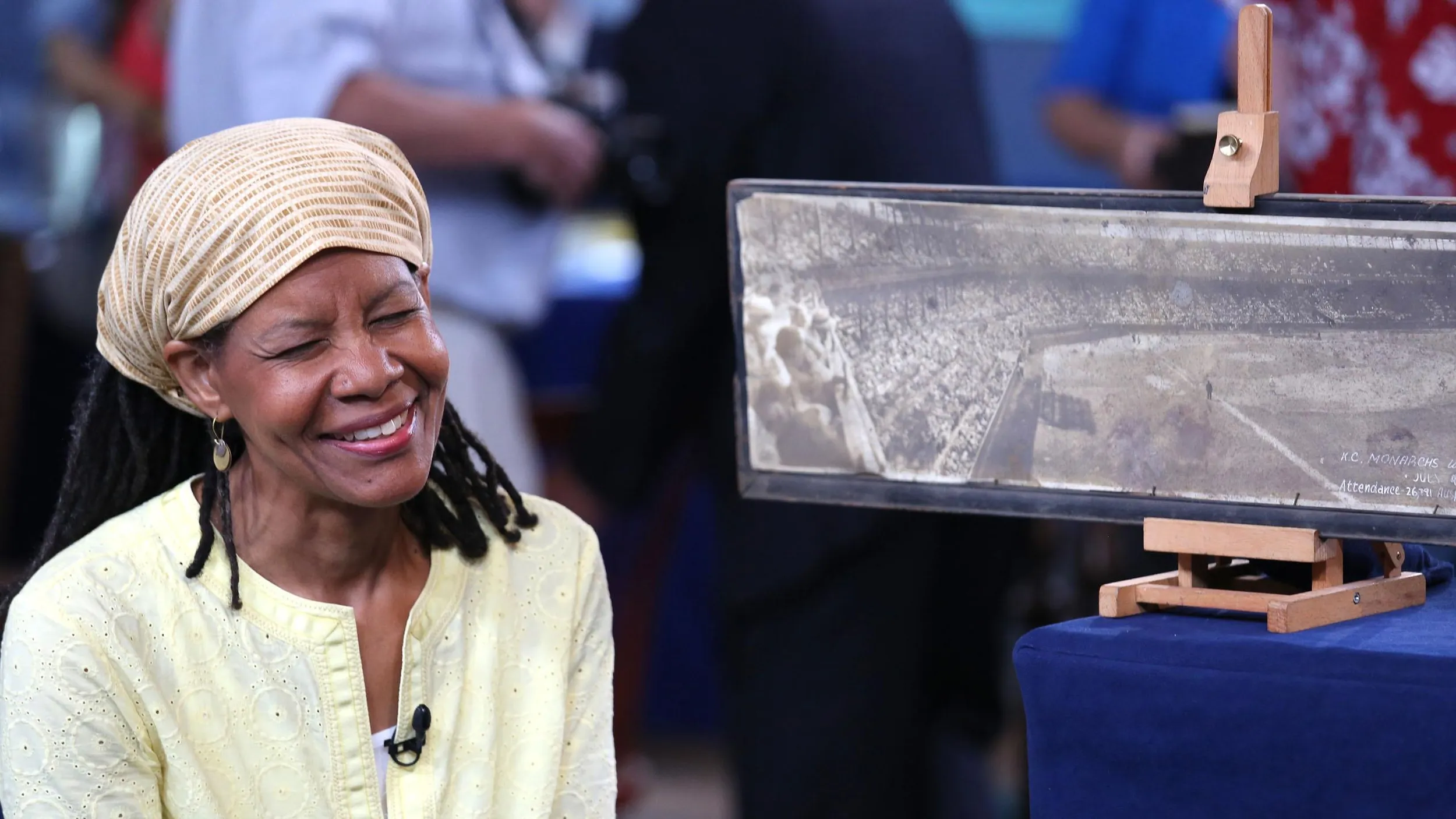GUEST: I brought a picture of my Uncle Bud, who was in World War II. And he died in World War II. There's the certificate for his Purple Heart and his Purple Heart, and then a piece of a kamikaze plane that hit the U.S.S. Franklin while he was on it. He was a radio operator. He brought it home whenever the ship went in to be repaired. And then when the ship went back out, he went back out on it, and he died on the Franklin. There was an explosion, I don't know if it was a bomb, or a missile, or what.
APPRAISER: The story of the Franklin is one of the most unheralded catastrophic Navy losses of World War II. There were plenty to choose from, but what they went through was pretty horrific. It's an Essex-class carrier, commissioned in early 1944. They were supporting operations off of the Philippines in late October 1944, when they were struck by this kamikaze aircraft. It was a bad hit. It wasn't a catastrophic hit from the perspective of the vessel itself, but there were 56 gentlemen killed and about 60 wounded. The Franklin was turned around. They took it back to Bremerton, Washington, to be refitted. It came back out, and it wasn't too long after that, and, in fact, we can see right here, it was in March of 1945 when they suffered the catastrophic strike that resulted in so many casualties, including the death of your uncle. At the time, they were supporting active air operations, so you have aircraft that are fueled and armed on the flight deck, there are aircraft that were fueled and armed in the hangar deck, and that bomber augured in and exploded amongst all that material in there. That's the problem with an aircraft carrier, is, there's so much flammable material on board, and especially when they are actively engaging in air operations, that's when they're the most vulnerable, and that's when they were struck. There were a number of them that were blown off by the original explosion, and there were others that sought refuge when they were trapped and simply had no choice but to jump into the ocean. That's one of the reasons why a lot of these gentlemen that were lost were listed as missing originally.
GUEST: Right.
APPRAISER: After he was confirmed as killed in action, what the military would have done, then, is to send to his family an engraved Purple Heart. If you were killed in action in World War II, you got the Purple Heart a little better than everybody else-- yours was engraved. We've got his rating, and we've got his name, and we see that he is a radar man.
GUEST: Right.
APPRAISER: He's a radar man, third class. They worked primarily in the combat information center. Purple Hearts, especially Navy-named Purple Hearts in World War II, command a premium on the collectors' market because they include so much information that you can then learn to flesh it out. It is what it represents, where the value comes in. In this case, this is even better, because we have the accolade, and spectacularly better because there's the chunk of the kamikaze aircraft that he took home as a souvenir from the first go-around with this.
GUEST: Right.
APPRAISER: If this wasn't your uncle's, if he had no family left and this was out in the world, looking for somebody to adopt him as family, what you would expect to pay, retail, for this today would be between $3,500 and $4,000.
GUEST: For this?
APPRAISER: For everything.
GUEST: For everything-- oh, my goodness. Wow.











